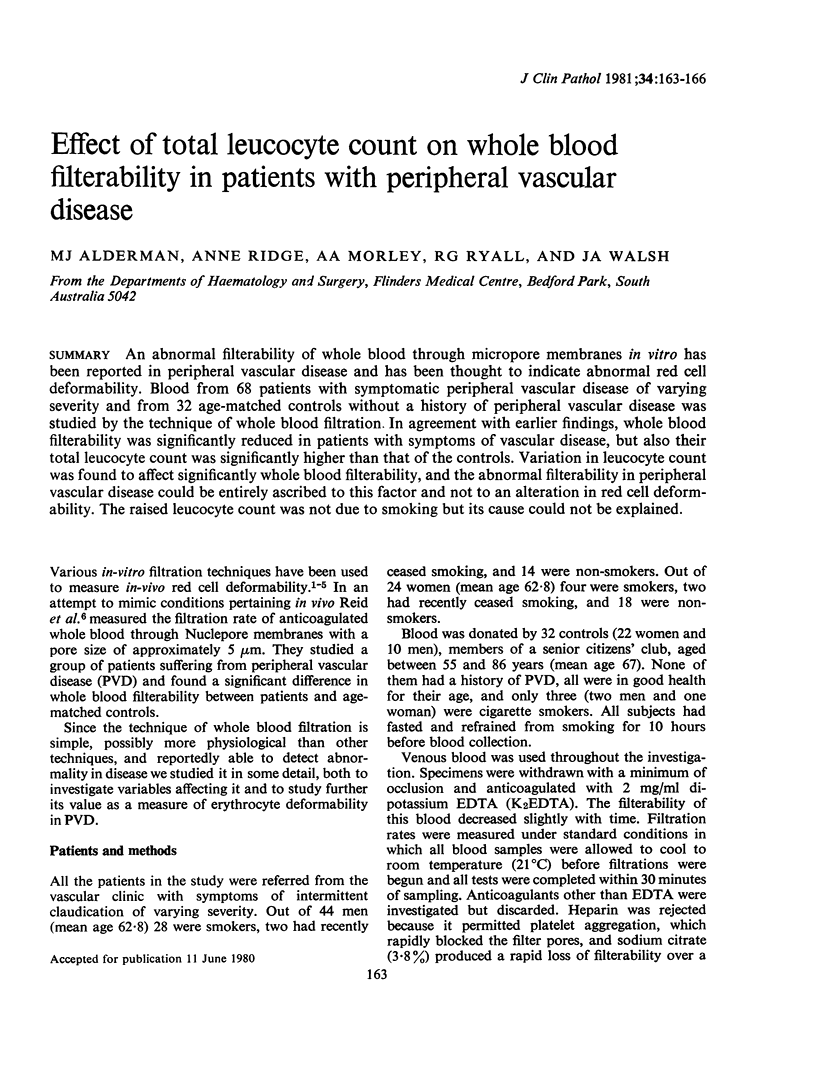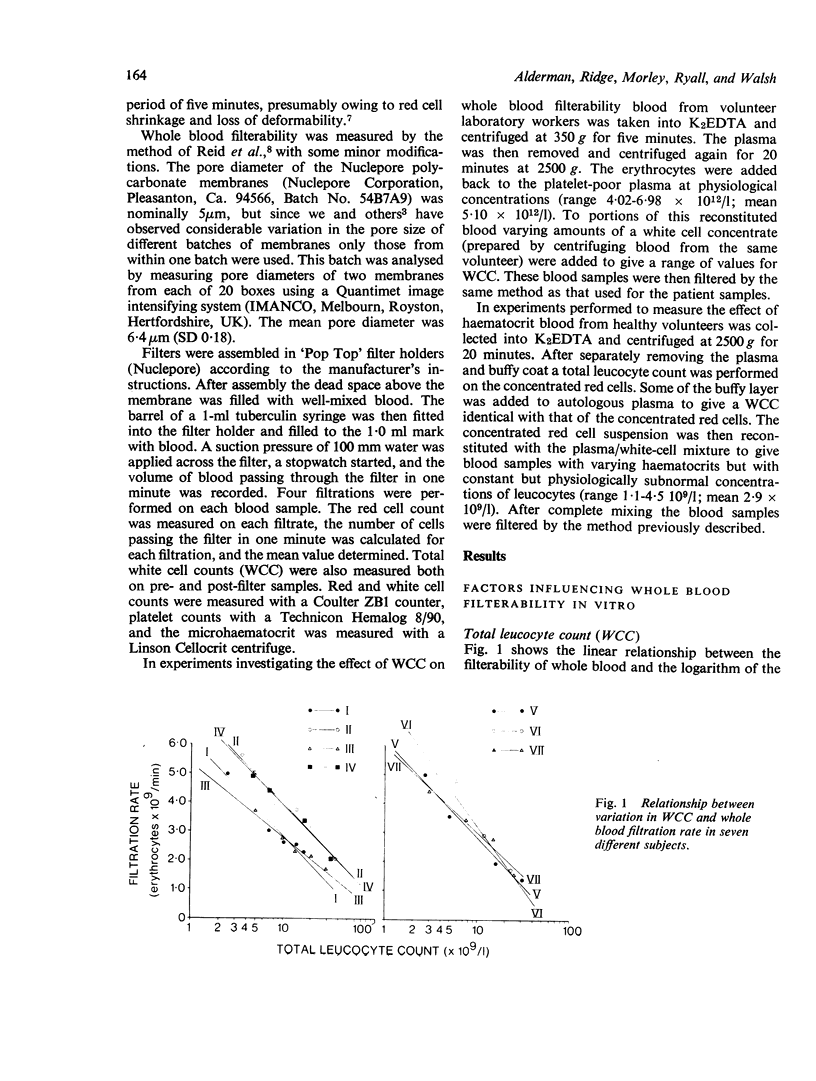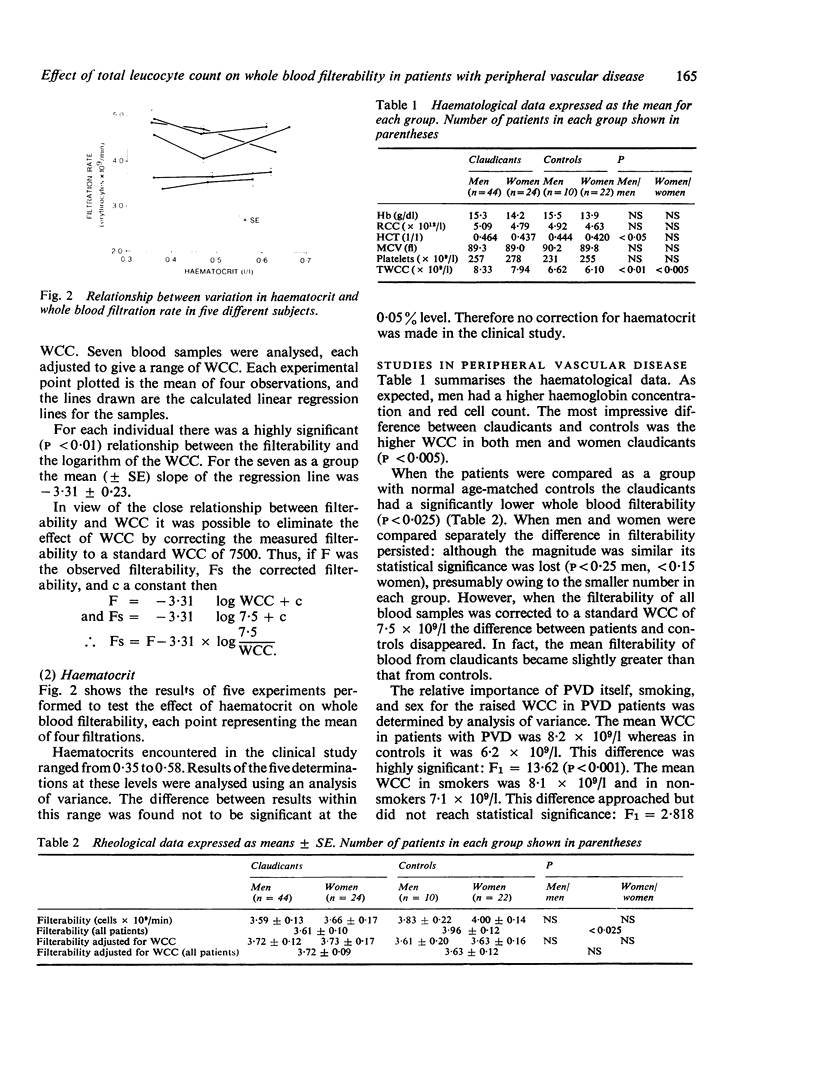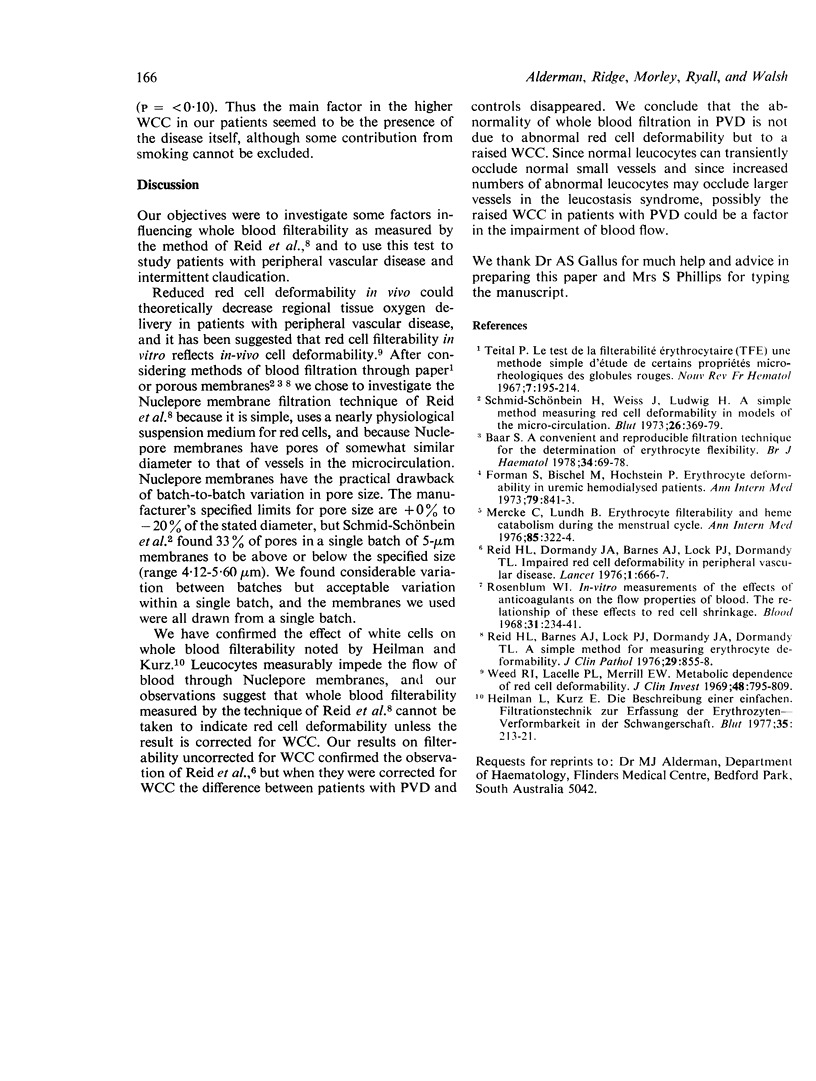Abstract
An abnormal filterability of whole blood through micropore membranes in vitro has been reported in peripheral vascular disease and has been thought to indicate abnormal red cell deformability. Blood from 68 patients with symptomatic peripheral vascular disease of varying severity and from 32 age-matched controls without a history of peripheral vascular disease was studied by the technique of whole blood filtration. In agreement with earlier findings, whole blood filterability was significantly reduced in patients with symptoms of vascular disease, but also their total leucocyte count was significantly higher than that of the controls. Variation in leucocyte count was found to affect significantly whole blood filterability, and the abnormal filterability in peripheral vascular disease could be entirely ascribed to this factor and not to an alteration in red cell deformability. The raised leucocyte count was not due to smoking but its cause could not be explained.
Full text
PDF



Selected References
These references are in PubMed. This may not be the complete list of references from this article.
- Baar S. A convenient and reproducible filtration technique for the determination of erythrocyte flexibility. Br J Haematol. 1976 Sep;34(1):69–78. doi: 10.1111/j.1365-2141.1976.tb00175.x. [DOI] [PubMed] [Google Scholar]
- Forman S., Bischel M., Hochstein P. Erythrocyte deformability in uremic hemodialyzed patients. Ann Intern Med. 1973 Dec;79(6):841–843. doi: 10.7326/0003-4819-79-6-841. [DOI] [PubMed] [Google Scholar]
- Heilmann L., Kurz E. Die Beschreibung einer einfachen Filtrationstechnik zur Erfassung der Erythrozyten-Verformbarkeit in der Schwangerschaft. Blut. 1977 Sep 29;35(3):213–221. doi: 10.1007/BF00999462. [DOI] [PubMed] [Google Scholar]
- Mercke C., Lundh B. Erythrocyte filterability and heme catabolism during the menstrual cycle. Ann Intern Med. 1976 Sep;85(3):322–324. doi: 10.7326/0003-4819-85-3-322. [DOI] [PubMed] [Google Scholar]
- Reid H. L., Barnes A. J., Lock P. J., Dormandy J. A., Dormandy T. L. A simple method for measuring erythrocyte deformability. J Clin Pathol. 1976 Sep;29(9):855–858. doi: 10.1136/jcp.29.9.855. [DOI] [PMC free article] [PubMed] [Google Scholar]
- Reid H. L., Dormandy J. A., Barnes A. J., Lock P. J., Dormandy T. L. Impaired red cell deformability in peripheral vascular disease. Lancet. 1976 Mar 27;1(7961):666–668. doi: 10.1016/s0140-6736(76)92778-1. [DOI] [PubMed] [Google Scholar]
- Rosenblum W. I. In vitro measurements of the effects of anticoagulants on the flow properties of blood: the relationship of these effects to red cell shrinkage. Blood. 1968 Feb;31(2):234–241. [PubMed] [Google Scholar]
- Schmid-Schönbein H., Weiss J., Ludwig H. A simple method for measuring red cell deformability in models of the microcirculation. Blut. 1973 Jun;26(6):369–379. doi: 10.1007/BF01632746. [DOI] [PubMed] [Google Scholar]
- Weed R. I., LaCelle P. L., Merrill E. W. Metabolic dependence of red cell deformability. J Clin Invest. 1969 May;48(5):795–809. doi: 10.1172/JCI106038. [DOI] [PMC free article] [PubMed] [Google Scholar]


